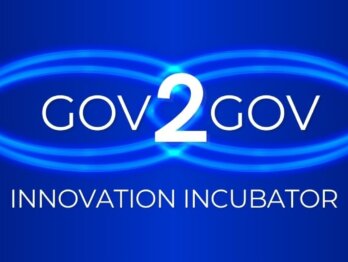How to become a fluent innovator: be deliberate, diversify and declare to innovate

This blog also appeared on Apolitical
Not too long ago, I moved from Sydney to Paris. No amount of book-learning could have prepared me for the rapidity of spoken Parisian French nor the sharp and shaming rebuke of unimpressed store clerks when my failure to communicate well held up the line.
This isn’t to say I didn’t learn a few things before immigrating. Au contraire. Skilled in the way of Australian small talk, I was very ready to speak about the weather.
“Ah, il neige! Il ne neige pas à Sydney” (“Oh it’s snowing! It doesn’t snow in Sydney!”). “Très bien Mademoiselle mais on n’accepte pas les cartes de crédit ici” (“Very good Miss, but we do not accept credit cards here…”)
As it turns out, rote learning is not fluency. The early days were…difficult.

My over reliance on the phrases that brought me comfort, because they rolled so trippingly off the tongue, rarely yielded the responses I wanted. Moreover, they rarely allowed me to respond in the way that I really wanted to.
I was unprepared for a whole range of scenarios.
Wanting to stay comfortable and resting on the thing you know, at the expense of developing others, is a human habit. While such a bad habit can lead to (charming?) encounters for hapless expats, it is a more serious problem when it comes to define organisational behaviour.
If we are to glean anything from the awkward months of my life in a new city, it is this: a comfort zone is not a place of transformation.
This is true in many life situations and a lesson worth bearing in mind when we think about public sector innovation.
These days, governments govern in times of volatility, uncertainty, complexity and ambiguity. They must deal with old and routine problems as much as new and complex ones. Often, they must change their operations just to maintain the same outcomes, let alone achieve better ones. They must continue to fulfil the high expectations of politicians and the public to do more (often with less), lest they incur high social and political cost.
Given all of this, it would be naïve to assume that old ways of thinking and doing are sufficient or that existing structures and processes will always be effective.
Innovation is necessary.
For those who want to move beyond the buzzword, to speak the language of innovation more fluently, the pertinent questions are not whether or not government should innovate (it should) but “how do we innovate deliberately?” and “what kind of innovation for what kind of challenge?”
Government must innovate deliberately
Public sector innovation is doing old things in new ways, new things in new ways and exploring things on the horizon to see what their effect could be on what it is possible to do. This is all to achieve tangible impact and (ideally) some value in the end.
As much as we can celebrate one-off innovation success stories, the complexity of today’s challenges, and the unforeseen enormity of those of tomorrow, requires something more than reactive, ad hoc, opportunistic innovation from a few people. For government to reliably, consistently innovate, innovation needs to be a strategic function of government and an activity in which everyone has a stake.
A deliberate approach to public sector innovation is one where innovation moves from sporadic, to systemic. This means that governments should:
- Conceptualise challenges holistically, looking at the various touchpoints a problem intersects with, not just which department is currently responsible for managing it
- Build leadership, capacity and capability so that there is political cover to try new things and the people power to actually do so
- Put in place processes, methods and practices that support innovation and give people the opportunity to try them
A deliberate approach to innovation allows government to generate innovative options to use across a range of scenarios in a consistent fashion. If the stakes are as high as we believe them to be, then innovation cannot be left to chance, it needs to be firmly at the heart of business-as-usual functions.
Put another way, it is not about expecting to become fluent by osmosis. Nor is it about occasionally reaching for a line in a phrase book and hoping it will do the trick (getting lucky, every now and then). It is about practicing the language every day, deepening awareness of the grammar and building your vocabulary, so that when you have to speak, you can respond not only appropriately but with alacrity.
Government must diversify its innovation
Governments need not only to be deliberate in their innovation efforts but also diversified. There are different kinds of innovation, suited to different kinds of scenarios.
1. Enhancement-oriented innovation
This kind of innovation typically builds on existing structures and focuses on upgrading practices, achieving efficiencies and better results. It might not challenge the status quo but it will require government to change its perspective on things or engage people in a different way. For example, the use of behavioural insights to boost compliance with payments.
2. Mission-oriented innovation
This kind of innovation aligns individual or organisation activities to achieve a lofty goal. Even if the goal is determined, the means by which to achieve may not yet be clear, so government has to leverage political will, learn new things, develop new knowledge and guide relevant actors in the ecosystem to work in service of it. For example, the space exploration mission that ultimately led to the moon landing.
This kind of innovation helps an organisation match internal practices to external change in the environment. For example, many government departments now use social media as part of their general outreach, as this has become a new effective channel to engage the public (and the public has changed its preferences for how it prefers to engage).
This kind of innovation explores and engages with emergent issues that might shape future priorities and commitments. For example, government funds investigative work into artificial intelligence, without yet having a clear idea about the possibilities of this technology and its application in government.
While being deliberate in their innovation efforts, governments should be cautious of taking a one-size-fits-all approach to their management and over relying on the kind of innovation that comes most easily. It is just as important to investigate what impact an emerging technology might have on future operations as it is to ensure your government forms are up to date and available digitally…
Different kinds of innovation necessitate different management strategies.
Government should consider a diversified “portfolio” approach to innovation management, tailoring strategies and building capacity to support each kind. This will allow it to generate different options suitable to a range of scenarios, known and unknown.
It would also be wise for government to develop a sensibility to choose meaningfully among them. Reliably having an option to respond to one scenario is a good thing. Having a few to choose from for each kind scenario, and being in a position where selection is carefully considered, is even better.
This is the difference between having the vocabulary and the basic grammar to say something at all and knowing how to say a range of things, in different registers according to social context. The former makes you a basic interlocutor. The latter, makes you a confident conversationalist.
Declare to innovate
Going from a situation of no innovation, or over reliance on just one kind of innovation, to systemic, systematic, diversified innovation is no mean feat. Where can government start?
The OECD Observatory for Public Sector Innovation created a Declaration on Public Sector Innovation to help governments cultivate this more deliberate and diversified approach to innovation.
It is open for public consultation until the 22 of February 2019. Have your say on the Declaration to make sure its principles and actions are useful to you and your organisation. All details, and a link to the consultation platform, are here.
Getting out of the comfort zone of doing nothing, or doing the thing you always know, is not easy but it is necessary. When challenge and change pose deep questions, you will want something worthwhile to say.












